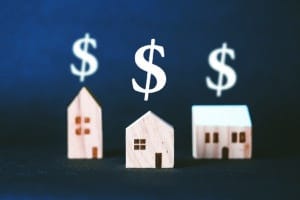Sellers giving in to a “new normal” for mortgage rates. Home prices staying roughly flat. Demand for apartments and rental houses staying strong.
These are some of the main points of agreement between the nation’s most prominent housing industry economists about what the 2024 housing market will look like.
But for many buyers and sellers, the picture painted by forecasts from economists at Zillow, Realtor.com and Redfin won’t look too different from the near-insurmountable affordability hurdles and challenges even finding homes for sale that they’ve faced for the last several years.
The three listings portals – Redfin is also a brokerage – each published their forecasts this week.
They all agree that, to one degree or another, homeowners who’ve been holding off selling since the fall of 2022 will start to surrender to the reality of “higher for longer” interest rates, but the degree to which that will affect inventory levels and home sales is disputed.
Realtor.com chief economist Danielle Hale and her team argued home sales will stay effectively static, dipping by 0.1 percent after a double-digit year-over-year decline this year, but inventory would still slide down another 14 percent driven by mortgage rates staying above 6.5 percent.
“This means that the lock-in effect, in which the gap between market mortgage rates and the mortgage rates existing homeowners enjoy on their outstanding mortgage, will remain a factor,” Hale and her colleagues wrote. “Roughly two-thirds of outstanding mortgages have a rate under 4% and more than 90% have a rate less than 6%.”
Still-high mortgage rates will continue to create create “a very high threshold for deciding to move” for existing homeowners, they said.
Zillow and Redfin didn’t attach a specific number to their inventory predictions, only saying to expect “more.”
“Many of those homeowners will have their eye on a home with a bigger backyard, an extra bedroom or in their preferred neighborhood across town, and Zillow predicts more of these homeowners will end their holdout for lower rates and go ahead with those moves,” Zillow’s team wrote in their unsigned predictions post.
Redfin Chief Economist Daryl Fairweather and her team, however, argued that this sentiment and what they expect to be a steady decline in mortgage rates throughout the year will create growing momentum that will see 2024 end with home sales up 5 percent over this year as sellers look to cash in on current prices.
This chimes with a forecast National Association of Realtors chief economist Lawrence Yun gave to the Greater Boston Association of Realtors at the group’s conference earlier this fall, where he also predicted that the nation’s housing markets would begin to climb out of their pandemic-induced inventory holes.
The overall effect on prices should be modest, Zillow, Redfin and Realtor.com economists said. The former two only predicted a leveling off of the overall monthly cost of buying a new home, while the latter foresaw a slightly larger 1.7 percent drop in the nation’s median home sale price.
However, some more affordable communities, like Worcester and Springfield, will see notable price growth, Realtor.com economists said. They predicted both will see more than 4 percent home-price growth, and that the Worcester area would see the number of homes sold grow 9.1 percent year-over-year in 2024, while Greater Springfield would see a 10.5 percent bump in the same figure, putting them in their predictions for the top 10 best-performing markets of 2024. In Greater Boston, however, Realtor.com is predicting 0.6 percent declines in inventory and home sale price.
And with prices staying relatively strong while mortgage rates discourage moving, Redfin predicted that “[m]ore homeowners will use their home as an ATM, pulling out cash to cover credit card debt and home renovations.”
Despite all these shifts, the three economics teams don’t foresee things getting much better for the average homebuyer.
Zillow expects these work-a-day first-time and move-up buyers will wind up doing battle with flippers and investors chasing homes that are cheaper by dint of needing upgrades and repairs, with as single-family rental becoming “the new starter home.”
“Demand — and prices — for single-family rentals will continue to increase next year as families look for a more affordable option to enjoy amenities like a private backyard or a home that doesn’t share walls with neighbors,” the site’s economists said.
Realtor.com predicts that the share of the median buyer’s income needed to cover the median home purchase will fall below 30 percent by the end of the year, from 39 percent in October of this year.
And Redfin foresees more buyers, even those with children, moving in with their families or planning to rent forever.
“With prices so high, buying a home doesn’t offer the same financial upside to young millennials and Gen Zers as it did baby boomers and Gen Xers. Rather than shelling out cash on agent fees, interest on a loan, property taxes, insurance and maintenance, many will decide that renting and investing their money in other ways makes the most sense,” the site’s economists said.




 |
| 


